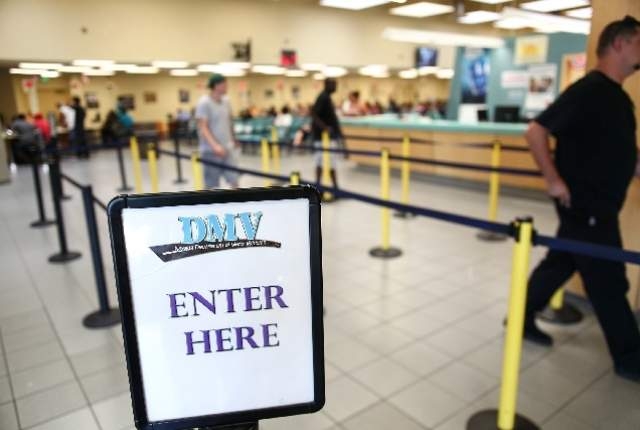Assessing elderly drivers: Is it time to take away the keys?

One of the hardest things you’ll ever have to do is take the keys away from the family patriarch.
When it’s time for that to happen, it’s bound to provoke arguments, heartaches and headaches for all parties involved. But it’s also a necessary step in the life cycle.
The tricky part about determining when to make that decision is that there’s no definitive age for an individual to quit driving. Some of us have dads, granddads, moms and grandmoms who are as sharp and alert behind the wheel as they were in their prime. But there are others driving today who should have quit years ago and they are making our streets unsafe.
Some make the case that there are motorists out there who never should have received a driver’s license in the first place — and they’re in their 20s. (Statistics tell us that drivers 15 to 19 years old are in the most accidents.)
One in six American drivers are 65 or older and the AAA Foundation for Traffic Safety says that fatal crashes per mile traveled start going up when a motorist hits age 70.
Numerous Warrior readers have inquired about what they can do to get unsafe elderly drivers off the road, fearful that some day their poor reaction time and diminished driving skills are going to end in tragedy.
There are a number of good resources out in cyberland that provide some good tips.
Although age alone shouldn’t be the determining factor in deciding when a person should stop driving, it is something that should be taken into consideration. That’s because as we age, we’re more susceptible to maladies that can impair our driving skills.
Good vision is one of the imperatives we need to drive well. Cataracts, macular degeneration, glaucoma and diabetic retinopathy can hamper an older motorist’s vision. Fortunately, corrective lenses can help solve some of those problems so it’s important that senior citizens see an optometrist or ophthalmologist annually, especially if they plan to continue to drive.
AgingCare.com notes that driving takes dexterity, ability and strength in both arms, legs and feet to control a vehicle. Physical limitations are a factor in the ability to drive so an elderly motorist needs to stay in shape to keep the car keys.
Medication is also a reality for the aging population so it’s important to know how prescription drugs will affect reaction time. A physician should be able to tell you about the side effects of any specific medication.
So how do you reach the conclusion that an individual should no longer drive?
It’s a good idea to have a talk about it first. It seems the holiday season when family get-togethers occur is a good place to start.
But if you want to gather some intelligence first, take a good look at the elder’s car. Are there any small dents or scrapes — an indication that individuals aren’t aware of their immediate surroundings and have been involved in some fender-benders or sideswipings?
Do a ride-along with your seniors. Observe how well they abide by the speed limits and the rules of the road. If you get on the freeway, see how well they stay in their lanes and whether they’re maintaining a good speed.
Some of the danger signs to watch for: Is the motorist running red lights or stop signs, stopping at green lights or at intersections that have no stop signs, or getting lost without calling a friend or relative?
The state does have some parameters that will help in the process.
Recently approved Nevada legislation requires motorists to renew their licenses every eight years, but for motorists who have reached age 65, it’s every four years.
Even with gentle conversation and kindly persuasion, there are still going to be a few out there who stubbornly believe they haven’t lost a step and will want to continue to drive.
The Nevada Department of Motor Vehicles has three important forms that can be used to have motorists evaluated for their driving ability. Those forms are at http://www.dmvnv.com/dmvforms.htm#dl, Forms and Publications, under the “Medical” category.
The key forms are a confidential physician’s report for medical assessments of a motorist’s driving ability; an agency request for re-examination, for law enforcement and government agencies to request a motorist to undergo a driving test, usually used after multiple traffic accidents; and a request for re-evaluation, for relatives to request a motorist undergo a driving test.
A few other recommendations from the EverydayHealth.com website designed to ease an elderly motorist away from driving is to discourage driving at night and in bad weather, driving only in familiar places, driving within a certain radius of home, staying off high-speed roads and freeways and limiting in-car distractions by turning off the radio or minimizing conversation among passengers.
Another good plan is to have alternative transportation options in place before the keys are taken away. Two of the most popular senior transportation programs are the Regional Transportation Commission of Southern Nevada’s Silver STAR transit system, 12 routes that connect neighborhoods with shopping areas, and its Flexible Demand Response, a door-to-door transit service serving Sun City Anthem, Sun City Summerlin and Centennial Hills.
Questions and comments should be sent to roadwarrior@reviewjournal.com. Please include your phone number. Follow the Road Warrior on Twitter @RJroadwarrior












